X-Ray to Albany: The Five Days That Rewrote the Vietnam War
The Battle of Ia Drang (Nov 1965) was the first major U.S.–NVA clash, proving the war would be far longer and bloodier than anyone expected
November 14, 2025

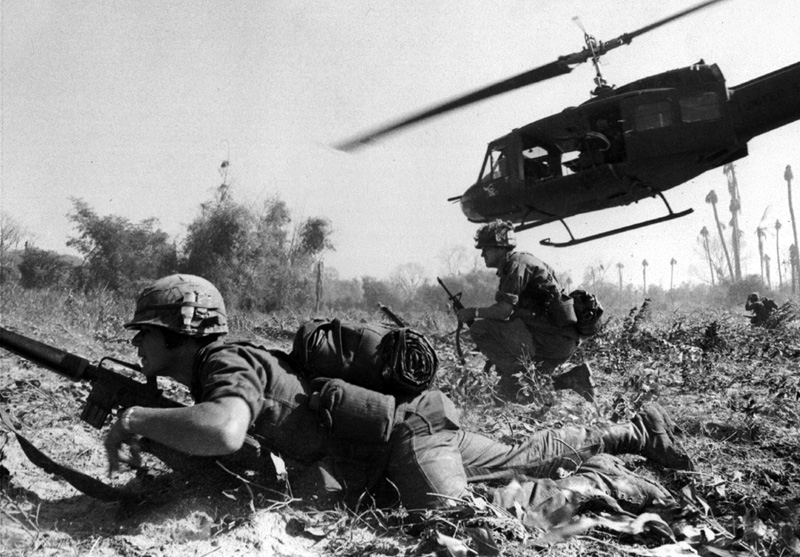 The Battle of Ia Drang: The Fight That Changed the Vietnam War
The Battle of Ia Drang: The Fight That Changed the Vietnam War
November 14–18, 1965
The Vietnam War had already been simmering for a decade when the United States entered with large-scale ground forces in 1965. But nothing in the early months of escalation prepared American military leaders for what would unfold in the Central Highlands that November. In the remote, elephant-grass plains east of Cambodia, at the base of the Chu Pong Massif, U.S. troops and North Vietnamese regulars clashed in a brutal, five-day contest that became the first major battle between the United States Army and the People’s Army of Vietnam (PAVN). It would become a turning point—a moment when tactics, expectations, and political assumptions shattered against the reality of determined, disciplined enemy forces who were far more capable than Washington believed.
The Battle of Ia Drang was more than a fight for ground; it was a test of two strategies, two systems of warfare, and two national wills. And in many ways, it revealed the course the war would take for the next decade.
Origins of the Battle
 By late 1965, the North Vietnamese had developed a strategy of drawing American forces away from the heavily populated coastal lowlands and into the Central Highlands. From the Cambodian border, PAVN regiments could stage operations with ease, slipping back across the frontier when pressured. Intelligence reports indicated that elements of the North Vietnamese 32nd, 33rd, and 66th Regiments had moved into the Chu Pong area, an imposing mountain complex surrounded by tall grass, scattered trees, and few roads. The region’s inaccessibility made it ideal for guerrilla operations—and a nightmare for conventional maneuver units.
By late 1965, the North Vietnamese had developed a strategy of drawing American forces away from the heavily populated coastal lowlands and into the Central Highlands. From the Cambodian border, PAVN regiments could stage operations with ease, slipping back across the frontier when pressured. Intelligence reports indicated that elements of the North Vietnamese 32nd, 33rd, and 66th Regiments had moved into the Chu Pong area, an imposing mountain complex surrounded by tall grass, scattered trees, and few roads. The region’s inaccessibility made it ideal for guerrilla operations—and a nightmare for conventional maneuver units.
Against this backdrop, the U.S. Army’s brand-new air-mobile division, the 1st Cavalry Division , was deployed to Vietnam. Their mission was to bring speed, flexibility, and helicopter mobility to a war fought in rugged terrain. The division’s doctrine centered on rapidly inserting troops into remote battlefield locations by helicopter, giving commanders the ability to chase and fix an elusive enemy. But the concept had never been tested against a fully committed, well-trained North Vietnamese regular force.
, was deployed to Vietnam. Their mission was to bring speed, flexibility, and helicopter mobility to a war fought in rugged terrain. The division’s doctrine centered on rapidly inserting troops into remote battlefield locations by helicopter, giving commanders the ability to chase and fix an elusive enemy. But the concept had never been tested against a fully committed, well-trained North Vietnamese regular force.
Colonel Thomas W. Brown, commander of the 3rd Brigade, issued orders to seek out and engage the PAVN forces believed to be massing near the Chu Pong Massif. And so, early on November 14, 1965, Lieutenant Colonel Harold G. Moore and the men of 1st Battalion, 7th Cavalry began their air assault into a clearing that would soon become one of the most infamous battlegrounds of the war.
The name of that clearing: Landing Zone X-Ray.
The Landing at X-Ray
At approximately 10:48 a.m., the first helicopters of the 229th Assault Helicopter Battalion descended into LZ X-Ray. The landing zone was barely large enough to handle the waves of Hueys bringing in companies of the 7th Cava lry. Moore had fewer than 400 men to start the operation, and the lifts were staggered, meaning his forces would be dangerously understrength for the first hour of the battle.
lry. Moore had fewer than 400 men to start the operation, and the lifts were staggered, meaning his forces would be dangerously understrength for the first hour of the battle.
The North Vietnamese were already present in large numbers. Unbeknownst to Moore, he had  inserted his battalion directly in front of elements of two North Vietnamese regiments—an estimated 1,600–2,000 enemy soldiers occupying bunker lines, draws, and concealed approaches that fed into the clearing. Almost immediately after the first lift touched down, firefights erupted on multiple fronts.
inserted his battalion directly in front of elements of two North Vietnamese regiments—an estimated 1,600–2,000 enemy soldiers occupying bunker lines, draws, and concealed approaches that fed into the clearing. Almost immediately after the first lift touched down, firefights erupted on multiple fronts.
Within minutes, the Americans were in a fight for survival.
Chaos and Heroism in the Tall Grass
The terrain around X-Ray was deceptive—sparse trees, waist-high grass, and dry creek beds known as "draws" offered perfect avenues of approach for enemy assault teams. Companies Bravo and Alpha bore the brunt of the first major attacks. A platoon from Bravo Company, moving toward the base of the Chu Pong, made contact and was quickly cut off, encircled, and nearly destroyed. It was during this desperate fight that Specialist Fourth Class Robert Ouellette, Sergeant Ernie Savage, and others organized a defensive perimeter that held out for nearly 18 hours—isolated, wounded, and vastly outnumbered.
As the battle intensified, Moore established a defensive perimeter around X-Ray. He moved constantly among his companies, issuing orders, repositioning squads, and directing supporting fires. Moore later said that his goal was simple: hold the line until every man was on the ground, no matter how fierce the attack.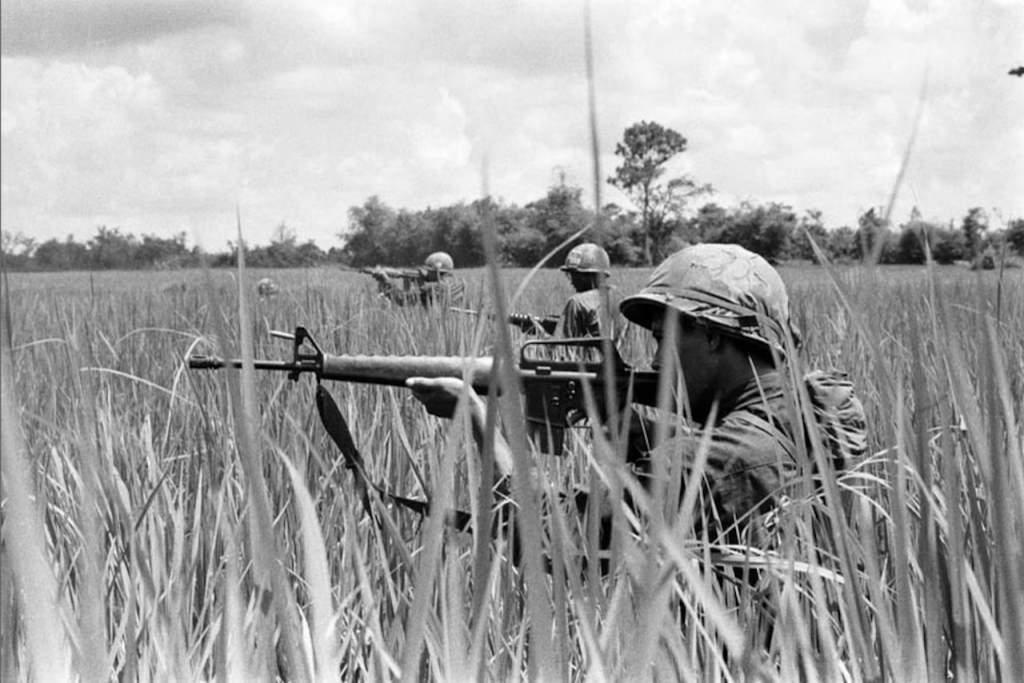
Throughout the afternoon, waves of PAVN soldiers assaulted the perimeter. Machine-gun teams fought at near point-blank range, sometimes exchanging fire at distances of 25 feet. Artillery from nearby firebases, controlled by forward observers with exceptional precision, crashed into enemy formations approaching through the grass. At one point, the fighting grew so close that Moore called artillery fire to within 30 meters of American lines—the closest allowable fire to friendly troops.
The courage of the medics was legendary. Men dragged wounded comrades through gunfire, shielding them with their own bodies. Chinook and Huey pilots risked their lives to get casualties out; one helicopter was so riddled with bullets that it crashed shortly after taking off, miraculously without fatalities.
That night, as illumination rounds drifted overhead, the Americans dug in, listening to the movement of North Vietnamese soldiers regrouping in the darkness.
The Second Day: The Line Holds
November 15 saw some of the most savage close-quarters fighting of the entire Vietnam War. At dawn, the PAVN launched a coordinated attack on the American right flank. Moore personally directed his men, guiding reinforcements where the line threatened to collapse. The enemy pressed to within yards of the perimeter, and the fighting became hand-to-hand in several places.
During the assault, reporter Joe Galloway, who had accompanied the battalion into the landing zone, dropped his camera and took up the job of assisting wounded soldiers, an act that would earn him the Bronze Star with V device.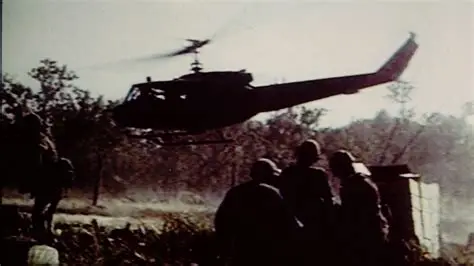
Air support, artillery, and the bravery of the infantry finally broke the enemy’s momentum. By late morning, the worst was over. Reinforcements from 2/7 Cavalry and 2/5 Cavalry arrived, expanding and securing the perimeter. For the first time in 30 hours, Moore had a stable defensive line.
But the battle itself was far from over. While X-Ray had been saved, another disaster was about to unfold.
The Ambush at LZ Albany
On November 17, after securing X-Ray, the 1st Cavalry began movement toward another landing zone: Albany. The march through the tall elephant grass was slow, exhausting, and filled with uncertainty. The troops were tired, dehydrated, and emotionally drained from the fighting at X-Ray.
At approximately 1:15 p.m., the column of 2/7 Cavalry walked directly into a massive North Vietnamese ambush.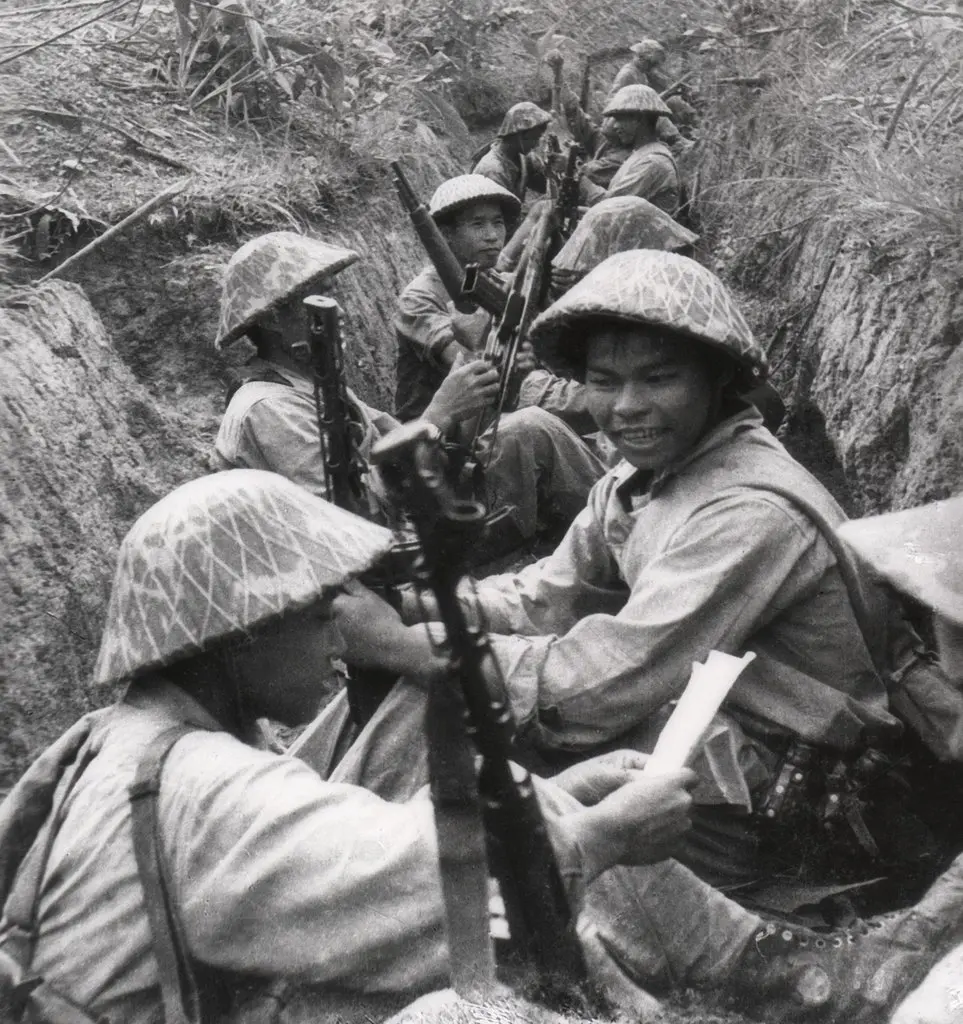
Unlike X-Ray—where the Americans held interior lines and strong artillery support—the situation at Albany was chaotic and fragmented. The column was stretched over hundreds of yards when the enemy struck from multiple directions. Officers were targeted first. Radio operators were shot in the opening seconds. Platoons were cut off, disoriented, and assaulted by waves of enemy infantry emerging from the treeline and grass.
It became one of the most devastating ambushes of the entire war.
The fighting at Albany was desperate and personal. Soldiers often did not see the enemy until they were within arm’s reach. Smoke, dust, and fire obscured visibility. Men who survived recalled the scene as a nightmare of overlapping firefights and sudden explosions. Some platoons were nearly annihilated.
Artillery and air support eventually blunted the ambush, but the cost was staggering. More than 150 Americans were killed at Albany—most within the first hour of the assault.
The Battle of Ia Drang was over by November 18, but its impact would echo for years.
Consequences and Strategic Lessons
Ia Drang proved several things that would shape the remainder of the Vietnam War.
First, the North Vietnamese were not guerrillas with rifles—they were disciplined, capable, and strategically sophisticated soldiers who could mass forces and employ combined arms tactics against an enemy with superior firepower. They were willing to engage U.S. units head-on and accept overwhelming casualties if it served their long-term objectives.
Second, the American air-mobile concept worked—but not without risk. Helicopters could bring troops into remote battlefields rapidly, but those troops were vulnerable the moment they landed. Furthermore, once committed, air-mobile units could become isolated and dependent on air support and artillery to survive.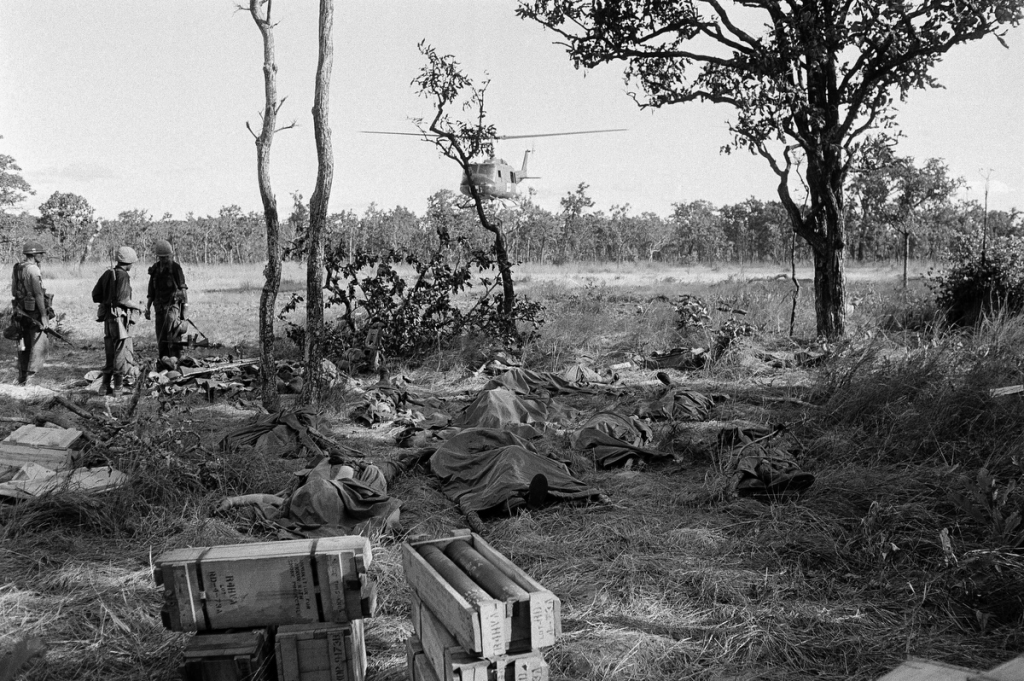
Third, killing large numbers of enemy troops did not equate to strategic victory. The United States reported more than 3,000 North Vietnamese killed, compared to 234 Americans, but the North Vietnamese perceived the battle as a validation of their strategy: if they could inflict steady casualties and survive, they could outlast American political will.
General Vo Nguyen Giap studied Ia Drang carefully. He concluded that the Americans could be drawn into remote areas, forced to expend massive resources, and then bled slowly. This would become the foundation for Hanoi’s war strategy for the next decade.
For the United States, Ia Drang foreshadowed the grind to come. The battle showed that modern firepower could win tactical victories but not necessarily change the strategic equation. It also demonstrated, conclusively, that the war would not be easy, quick, or contained.
Legacy of Ia Drang
The Battle of Ia Drang remains one of the most studied engagements of the Vietnam War. It was documented with extraordinary detail in the 1992 book “We Were Soldiers Once… and Young ” by Harold G. Moore and journalist Joseph L. Galloway, who both lived the battle firsthand. Their work
” by Harold G. Moore and journalist Joseph L. Galloway, who both lived the battle firsthand. Their work  brought the voices of the soldiers—American and North Vietnamese—into the global conscience.
brought the voices of the soldiers—American and North Vietnamese—into the global conscience.
The 2002 film “We Were Soldiers,” starring Mel Gibson as Hal Moore, dramatized the fight and introduced the battle to a new generation, though with significant liberties. For historians, the importance of Ia Drang lies not in Hollywood, but in its lessons about courage, leadership, the limits of technology, and the resilience of the human spirit under extreme pressure.
Ia Drang set the pattern for the Vietnam War. It was a brutal clash of wills, fought in the heat, dust, and grass of a remote valley thousands of miles from home. It was a battle where young men displayed unimaginable bravery, where commanders fought alongside their troops, and where the future of the war came into stark focus.
Today, when veterans of the 1st Cavalry Division recall Ia Drang, they do so with the solemnity reserved for battles that defined their lives. They remember the friends they lost, the chaos of the fight, and the fierce determination that carried them through.
Though decades have passed, the echoes of that valley still linger—in the stories, in the memorials, and in the unwavering commitment to remember what happened between the 14th and 18th of November 1965. The Battle of Ia Drang endures as the moment when the Vietnam War fully, finally revealed itself—a fight that demanded everything from those who answered the call.
 The Battle of Ia Drang: The Fight That Changed the Vietnam War
The Battle of Ia Drang: The Fight That Changed the Vietnam War